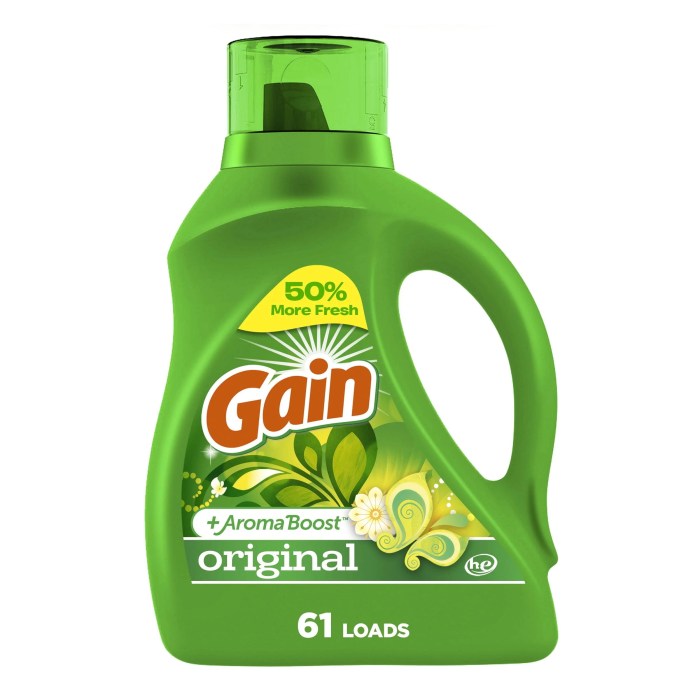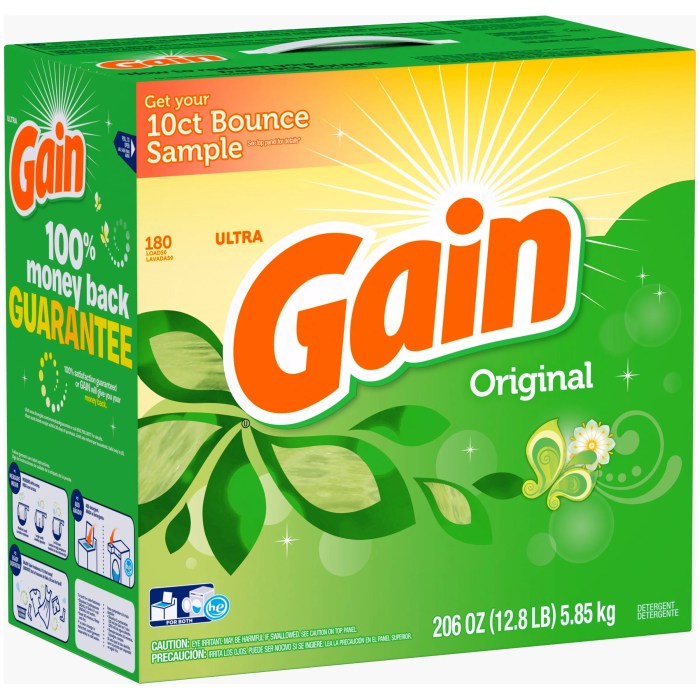How to gain muscle fast? This isn’t just about lifting weights—it’s a holistic approach to building strength and physique. From understanding the fundamentals of muscle growth to crafting effective training strategies and fueling your body with the right nutrition, we’ll dive deep into all aspects of this exciting journey. We’ll explore the science behind muscle hypertrophy, the role of macronutrients, and the crucial importance of rest and recovery.
This comprehensive guide equips you with the knowledge and strategies to accelerate your muscle-building progress safely and effectively.
This guide breaks down the complex process of muscle growth into manageable steps, providing practical advice and actionable strategies. We’ll cover everything from the optimal training techniques and nutrition plans to the importance of rest and recovery, and common mistakes to avoid. Whether you’re a seasoned lifter or just starting your fitness journey, this guide has something for everyone. It’s time to transform your physique and unlock your full potential!
Fundamentals of Muscle Growth
Building muscle, or hypertrophy, is a complex process driven by a combination of factors. It’s not just about lifting weights; it’s about understanding the biological mechanisms that lead to stronger, more defined muscles. This involves understanding the interplay of protein synthesis, caloric intake, and the unique characteristics of different muscle fiber types. A deep dive into these fundamentals is crucial for anyone aiming to optimize their training and achieve their muscle-building goals.
Biological Processes of Muscle Hypertrophy
Muscle hypertrophy, the increase in muscle size, is a result of cellular changes. Microscopic tears in muscle fibers, caused by resistance training, trigger a cascade of biological events. These include increased protein synthesis, where the body builds new muscle proteins, and reduced protein breakdown, where the body degrades existing muscle proteins. This process is highly responsive to the stimuli provided by resistance training.
Role of Protein Synthesis and Breakdown
Protein synthesis is the process where the body constructs new proteins, including those that form muscle tissue. Resistance training acts as a powerful stimulus, activating molecular pathways that increase protein synthesis rates. Protein breakdown, the process of breaking down existing proteins, also plays a crucial role. A balanced approach to training and nutrition is essential to ensure that protein synthesis exceeds protein breakdown, leading to net muscle growth.
The ideal state is one where protein synthesis is significantly greater than protein breakdown, creating a positive protein balance.
Importance of Caloric Intake for Muscle Building
Sufficient caloric intake is vital for muscle growth. The body requires energy (calories) to fuel the processes of protein synthesis and repair. If caloric intake is insufficient, the body may resort to breaking down muscle tissue for energy, hindering growth. Adequate caloric intake provides the necessary building blocks for muscle growth, allowing for optimal recovery and repair after training.
Different Types of Muscle Fibers and Their Roles
Skeletal muscles are composed of different types of muscle fibers: type I (slow-twitch), type IIa (fast-twitch oxidative-glycolytic), and type IIx (fast-twitch glycolytic). Type I fibers are highly resistant to fatigue and are crucial for endurance activities. Type IIa fibers are intermediate in their characteristics, providing both speed and endurance. Type IIx fibers are responsible for explosive movements and maximal strength.
Different training methodologies target these fiber types differently, leading to varied outcomes. Strength training, for example, can stimulate all fiber types to varying degrees, depending on the intensity and volume of the training program.
Looking to pack on some serious muscle? It’s not a sprint, it’s a marathon, and consistency is key. But sometimes, the motivation fades. That’s why it’s crucial to remember 11 reasons to not give up on exercising – because those consistent workouts, combined with a smart diet, are the real muscle-building magic. Focus on compound lifts, progressive overload, and adequate protein intake for optimal results, and you’ll be well on your way to a stronger, more muscular you.
Key Macronutrients for Muscle Growth
| Macronutrient | Role in Muscle Growth | Recommended Intake (Example) |
|---|---|---|
| Protein | Essential for building and repairing muscle tissue. Protein provides the amino acids necessary for muscle protein synthesis. | 1.6-2.2 grams per kilogram of body weight per day. |
| Carbohydrates | Provide energy for training and recovery. They are crucial for replenishing glycogen stores, which are essential for optimal performance. | 4-6 grams per kilogram of body weight per day. |
| Fats | Essential for hormone production, cell function, and overall health. Healthy fats are crucial for optimal body function and support muscle growth. | 20-35% of total daily calories. |
These macronutrients work synergistically to support muscle growth and recovery. A balanced intake of all three is essential for optimal results.
Training Strategies for Fast Muscle Growth
Unlocking your full muscle-building potential requires a strategic approach beyond just hitting the gym. Effective training strategies are crucial for maximizing gains and achieving rapid progress. This involves understanding different training styles, incorporating progressive overload, and tailoring workouts to your specific goals. Let’s delve into the key training strategies that will propel you towards faster muscle growth.Effective resistance training techniques are essential for maximizing muscle growth.
Proper form, controlled movements, and sufficient intensity are key components of any successful training program. Focusing on compound exercises, which work multiple muscle groups simultaneously, is a highly efficient way to build overall strength and muscle mass.
Resistance Training Techniques
Compound exercises are vital for overall strength and muscle growth. They engage multiple muscle groups, leading to greater gains in strength and size compared to isolation exercises. Examples include squats, deadlifts, bench presses, and overhead presses. These exercises recruit a larger number of muscle fibers, promoting a more significant hormonal response, which is crucial for muscle growth. Employing proper form and technique is paramount to prevent injuries and ensure maximal effectiveness.
Different Training Styles
Different training styles cater to varying goals and preferences. Hypertrophy training focuses on building muscle size, while strength training emphasizes maximal force production. Understanding the distinctions between these styles is crucial for designing a personalized program.
- Hypertrophy training emphasizes high volume and moderate intensity. Sets of 8-12 repetitions are common. This style prioritizes muscle fiber recruitment and growth. For example, a lifter focusing on hypertrophy might perform 3 sets of 10-12 repetitions for each exercise.
- Strength training prioritizes heavy weight and low repetitions, typically 1-5 reps. This approach focuses on maximizing force output and neural adaptations. An example of a strength training program might involve 1 set of 5 repetitions for each exercise.
Progressive Overload
Progressive overload is a cornerstone of muscle development. It involves gradually increasing the demands placed on your muscles over time. This could be through increasing weight, sets, reps, or the frequency of training. Without progressive overload, your muscles adapt to the existing stimulus, leading to plateaus in growth.
“Progressive overload is the key to unlocking muscle growth. By continually challenging your muscles, you force them to adapt and grow stronger and larger.”
Want to pack on muscle fast? Focus on a consistent workout routine, combined with a balanced diet rich in protein. Plus, consider incorporating a new, eco-friendly way to get around town, like the mover trendy new way commute. This innovative mode of transport will not only help you save money but also improve your overall health, which is essential for building muscle.
So, get moving, both in the gym and on the streets, and watch those muscles grow!
Workout Routines
To achieve rapid muscle growth, it’s essential to design a workout routine that aligns with your goals and training style. Below are two sample routines, one focusing on hypertrophy and the other on strength. These examples are just starting points and should be adjusted based on individual progress and needs.
- Hypertrophy Routine (Example):
- Day 1: Bench Press, Barbell Rows, Squats, Overhead Press, Bicep Curls, Triceps Extensions
- Day 2: Rest or Active Recovery
- Day 3: Deadlifts, Leg Press, Pull-downs, Lateral Raises, Leg Extensions
- Day 4: Rest or Active Recovery
- Day 5: Repeat Day 1
- Day 6: Repeat Day 3
- Day 7: Rest
- Strength Routine (Example):
- Day 1: Squat, Deadlift, Bench Press
- Day 2: Rest or Active Recovery
- Day 3: Barbell Rows, Overhead Press, Pull-ups
- Day 4: Rest or Active Recovery
- Day 5: Repeat Day 1
- Day 6: Repeat Day 3
- Day 7: Rest
Training Splits Comparison
Different training splits offer various approaches to muscle growth. The optimal split depends on individual factors, including training experience, recovery capacity, and personal preferences. The following table provides a comparison of different training splits and their suitability for fast muscle growth.
| Training Split | Description | Suitability for Fast Muscle Growth |
|---|---|---|
| Upper/Lower | Focuses on alternating upper and lower body workouts | Good for beginners and intermediate lifters. Allows for good recovery. |
| Push/Pull/Legs | Divides workouts into push, pull, and leg exercises | Excellent for focusing on specific muscle groups and promoting balanced development. |
| Full Body | Involves working all major muscle groups in a single workout | Suitable for beginners and those with good recovery capacity. May not be ideal for advanced lifters. |
Nutrition and Supplementation for Muscle Growth
Proper nutrition is the cornerstone of any successful muscle-building program. It’s not just about eating enough; it’s about strategically consuming the right nutrients at the right times to maximize muscle protein synthesis and recovery. Supplements can play a supporting role, but they shouldn’t replace a balanced diet. Focus on whole foods first, and use supplements as tools to bridge any nutritional gaps.Optimizing your diet and supplementation is critical for achieving your muscle-building goals.
Understanding the importance of protein intake, carbohydrate consumption, and strategic timing around workouts is key to maximizing your results. This section delves into the specifics of nutritional strategies for muscle growth, emphasizing the role of protein, carbohydrates, and potential supplements.
Optimal Protein Intake for Muscle Growth and Recovery
Protein is essential for muscle growth and repair. Adequate protein intake is crucial for stimulating muscle protein synthesis, the process of building new muscle tissue. The optimal protein intake for muscle growth varies based on factors such as individual needs, activity levels, and training intensity. Generally, a range of 1.6 to 2.2 grams of protein per kilogram of body weight is often recommended for individuals actively involved in resistance training.
Timing Protein Intake Around Workouts
Consuming protein around workouts is crucial to maximize muscle protein synthesis. Consuming protein before, during, and after workouts can promote muscle growth and recovery. Protein intake before a workout provides amino acids to support ongoing muscle protein synthesis. During a workout, consuming protein helps maintain blood amino acid levels. Post-workout, protein intake is particularly important for repairing and rebuilding muscle tissue damaged during exercise.
Role of Carbohydrates in Fueling Workouts and Muscle Recovery
Carbohydrates are essential for fueling workouts. They provide the body with the glucose it needs for energy during exercise. Carbohydrates also play a vital role in muscle recovery. They replenish glycogen stores in muscles, which are crucial for optimal performance in subsequent workouts. Prioritize complex carbohydrates over simple sugars for sustained energy and better muscle recovery.
Potential Supplements to Aid Muscle Growth (with Cautions)
While a balanced diet is paramount, certain supplements may aid muscle growth. However, it’s crucial to understand that supplements are not a magic bullet and should be used in conjunction with a healthy diet and exercise program. Always consult with a healthcare professional before taking any supplements.
- Creatine Monohydrate: Creatine is a popular supplement that may increase strength and power output. It helps replenish ATP, the body’s primary energy source, during high-intensity exercise. It is generally considered safe when used as directed.
- Whey Protein: Whey protein is a fast-digesting protein source that can be beneficial for post-workout recovery. It can help promote muscle protein synthesis and aid in muscle repair.
- Branch Chain Amino Acids (BCAAs): BCAAs are essential amino acids that may support muscle protein synthesis and reduce muscle soreness. They are often consumed during or after workouts.
- Casein Protein: A slow-digesting protein, casein provides a sustained release of amino acids, promoting muscle protein synthesis over a longer period. It’s often consumed before bed to support overnight muscle recovery.
Protein Sources and Their Protein Content
The table below presents various protein sources and their approximate protein content per 100 grams. Note that these values can vary slightly based on preparation methods and specific cuts of meat.
| Protein Source | Protein Content (g) |
|---|---|
| Chicken Breast | 30-35 |
| Lean Beef | 25-30 |
| Fish (Salmon) | 20-25 |
| Eggs | 13 |
| Greek Yogurt | 10-15 |
| Lentils | 8-10 |
| Tofu | 8 |
Rest and Recovery for Muscle Growth
Building muscle isn’t just about lifting weights; it’s about giving your body the time and resources to repair and rebuild those muscles. Proper rest and recovery are crucial for maximizing gains and preventing injuries. Without adequate recovery, your efforts in the gym can be wasted, and your progress will be stunted. This section delves into the importance of sleep, active recovery, listening to your body, managing stress, and creating a personalized sleep schedule for optimal muscle growth.Adequate rest isn’t just about sleeping; it’s about a holistic approach to recovery.
This includes strategic sleep, active recovery techniques, stress management, and understanding the signals your body sends. By understanding and implementing these strategies, you can elevate your workouts and optimize your body’s ability to grow muscle.
Importance of Adequate Sleep
Sleep is a critical component of muscle repair and growth. During sleep, the body releases hormones crucial for muscle protein synthesis, the process of building new muscle tissue. Growth hormone, for example, is predominantly released during deep sleep stages. Studies have shown a strong correlation between adequate sleep and increased muscle mass. Aiming for 7-9 hours of quality sleep per night is generally recommended for most adults.
Insufficient sleep can hinder protein synthesis, reduce muscle strength, and increase the risk of injury.
Role of Active Recovery
Active recovery involves low-intensity activities that promote blood flow to the muscles without causing further stress. Examples include light walks, stretching, or swimming. These activities help reduce muscle soreness, improve flexibility, and speed up the recovery process. Active recovery also enhances the delivery of nutrients to the muscles, aiding in the repair and growth process. By incorporating active recovery into your routine, you can promote faster muscle recovery and minimize the risk of delayed-onset muscle soreness (DOMS).
Listening to Your Body and Recognizing Signs of Overtraining, How to gain muscle fast
Ignoring the signals your body sends can lead to overtraining. Overtraining occurs when you push your body beyond its capacity to recover, resulting in decreased performance, increased muscle soreness, and a higher risk of injury. Pay attention to indicators such as persistent fatigue, decreased motivation, and difficulty sleeping. These are often early warning signs of overtraining, prompting you to adjust your training program and recovery strategies.
Recognizing these signals and taking proactive measures is essential to prevent setbacks and promote long-term progress.
Strategies for Managing Stress
Stress can negatively impact muscle growth by disrupting hormonal balance and reducing the body’s ability to recover. High levels of stress can lead to elevated cortisol levels, which can hinder muscle protein synthesis and promote muscle breakdown. Incorporating stress-reducing activities, such as meditation, yoga, or spending time in nature, can help regulate cortisol levels and promote a more favorable environment for muscle growth.
Prioritizing stress management is an integral part of a holistic approach to fitness and muscle growth.
Creating a Personalized Sleep Schedule
A personalized sleep schedule should consider your individual needs and training schedule. Determine the optimal time for you to fall asleep and wake up, considering factors like your training schedule, work schedule, and personal preferences. Consistency is key; maintaining a regular sleep schedule, even on weekends, will help regulate your body’s natural sleep-wake cycle, known as the circadian rhythm.
This rhythm plays a critical role in hormone regulation and recovery. Creating a personalized sleep schedule involves recognizing your body’s signals, setting consistent sleep and wake times, and creating a relaxing bedtime routine to promote quality sleep.
Individual Considerations and Considerations: How To Gain Muscle Fast

Building muscle isn’t a one-size-fits-all endeavor. Individual responses to training and nutrition vary significantly, influenced by a complex interplay of genetics, hormones, age, sex, and current fitness levels. A personalized approach, understanding these variables, and maintaining a balanced and sustainable strategy are key to achieving optimal results. Ignoring these factors can lead to frustration and potentially hinder progress.Individual differences are inherent in any training program.
A beginner lifter with little experience will respond differently to the same program as a seasoned bodybuilder. Therefore, tailoring training and nutrition to specific needs is essential for success. Recognizing these individual factors allows for adjustments and modifications to optimize the journey toward muscular development.
Pumping iron for faster muscle growth often involves a dedicated routine and healthy diet. But sometimes, the best way to push your limits is to embrace solitude. Think about it: uninterrupted focus on your workout, no distractions from others. Just you and your fitness goals. For instance, discovering your inner strength can parallel the ability to navigate the world on your own.
This aligns with the principles of self-reliance discussed in 9 ways know youre better suited traveling alone. Ultimately, if you’re serious about building muscle, you need a certain degree of self-discipline and focus, just like when you’re traveling solo.
Factors Affecting Individual Responses
Individual responses to training and nutrition are influenced by a variety of factors, including genetics, hormones, age, sex, and current fitness levels. A comprehensive understanding of these factors is crucial for creating an effective and personalized approach to muscle growth.
- Genetics: Genetic predisposition plays a significant role in muscle fiber type, which impacts potential strength and hypertrophy. Some individuals naturally possess a greater capacity for muscle growth than others. This doesn’t negate the importance of training and nutrition, but it does explain why some people seem to respond more quickly than others. Factors like the efficiency of protein synthesis and the rate of muscle repair are also genetically influenced.
- Hormonal Levels: Hormones, such as testosterone and growth hormone, are crucial for muscle protein synthesis and overall growth. Variations in hormonal levels can affect an individual’s capacity to build muscle. This can differ significantly between men and women, and even within the same sex based on age and other health factors.
- Age: Muscle growth potential generally declines with age due to decreased hormone levels and a reduced capacity for protein synthesis. However, with proper training and nutrition, individuals of any age can still build muscle, although the rate may be slower. Older adults may require adjustments in training volume, intensity, and recovery time. Training programs should be tailored to address the specific needs and limitations of older adults.
- Sex: Men and women respond differently to training and nutrition due to differences in hormone levels and body composition. Men generally have higher testosterone levels, leading to a greater capacity for muscle growth. Women, with their naturally lower testosterone levels, may need to prioritize resistance training and appropriate nutrition strategies to stimulate muscle growth.
- Current Fitness Levels: Individuals starting from a lower fitness baseline will likely experience more rapid improvements in the initial stages of training. As fitness levels increase, the rate of improvement may slow down. Adjusting training intensity and volume as fitness progresses is crucial to continue stimulating muscle growth.
Importance of a Balanced and Sustainable Approach
Building muscle requires a multifaceted approach encompassing not only proper training but also a balanced and sustainable nutritional strategy and sufficient rest and recovery. A holistic approach that considers individual needs and limitations is essential to avoid burnout and ensure long-term progress. A sustainable program is more likely to produce long-term results compared to a quick-fix or unsustainable approach.
- Nutrition: A balanced diet rich in protein, carbohydrates, and healthy fats is essential for muscle growth. Protein is critical for muscle repair and growth. The right amount of carbohydrates provides energy for training, and healthy fats support hormone production. A detailed nutritional plan is necessary to ensure adequate intake of nutrients.
- Training: A well-structured training program that gradually increases intensity and volume is crucial for stimulating muscle growth. This should be adjusted according to individual needs and fitness levels. Progress should be gradual, not abrupt.
- Rest and Recovery: Adequate rest and recovery are just as important as training and nutrition. Sleep allows the body to repair and rebuild muscle tissue. Proper sleep and recovery time allow for optimal muscle growth.
Training Approach Table
| Individual Goal | Experience Level | Training Approach |
|---|---|---|
| Beginner | Muscle Gain | Focus on compound exercises, low to moderate weight, high reps. Prioritize proper form over heavy lifting. Aim for 2-3 sessions per week. |
| Intermediate | Muscle Gain | Increase weight and intensity. Introduce isolation exercises. Increase training frequency to 3-4 sessions per week. |
| Advanced | Muscle Gain | Focus on high intensity training (HIT), advanced techniques like drop sets, and very high volume training. Prioritize progressive overload. Aim for 4-6 sessions per week, with appropriate rest and recovery periods. |
Common Mistakes to Avoid
Building muscle takes dedication and the right approach. Many people stumble along the way, often due to easily avoidable errors. Understanding these pitfalls is crucial for maximizing your progress and avoiding setbacks. This section Artikels common mistakes and their potential consequences to help you stay on track.Effective muscle growth hinges on a comprehensive strategy that considers training, nutrition, and recovery.
Neglecting any of these crucial elements can significantly impede progress. By recognizing these common pitfalls, you can steer clear of roadblocks and cultivate a more sustainable and successful approach to muscle growth.
Improper Training Form and Technique
Consistent, correct form is essential for effective muscle engagement and injury prevention. Inconsistent or improper technique can lead to decreased muscle activation, hindering growth, and increasing the risk of injuries like strains or tears. Focusing on controlled movements and maintaining proper alignment throughout your exercises is critical.Poor form often leads to compensating with other muscles, resulting in uneven development.
For example, if you can’t properly perform a bench press, your body might shift, engaging different muscles to lift the weight, ultimately neglecting the targeted chest muscles. This reduces the effectiveness of the exercise and potentially puts stress on other areas. Using proper form ensures targeted muscle engagement, maximizing results and minimizing risk.
Neglecting Adequate Rest and Recovery
Adequate rest and recovery are fundamental to muscle growth. The body repairs and rebuilds muscle tissue during rest periods, not during the workout itself. Insufficient rest leads to overtraining, impacting both muscle growth and overall well-being. Overtraining manifests in reduced strength, fatigue, and increased risk of injury.A lack of adequate sleep (7-9 hours) and insufficient downtime negatively impacts muscle recovery.
If you’re constantly pushing your body without allowing for sufficient repair, your muscles won’t have the opportunity to grow. Prioritizing rest and recovery is essential to optimize muscle protein synthesis and promote consistent progress. Aim for a balanced schedule that includes sleep, active recovery (light exercise like walking), and stress management.
Unsustainable Diets and Unrealistic Expectations
Rapid, drastic dietary changes and unrealistic expectations about muscle growth are common pitfalls. Crash diets and extreme calorie restrictions can lead to nutrient deficiencies and hormonal imbalances, hindering progress and potentially causing long-term health issues. Muscle growth takes time and consistency, and rapid results are often unsustainable and counterproductive.Similarly, unrealistic expectations about muscle growth rates are often a major source of frustration.
Muscle growth is a gradual process, and expecting to see significant changes overnight is unrealistic. Focus on consistent progress over time, rather than chasing unrealistic timelines or quick fixes. A balanced and sustainable approach to nutrition is key to achieving long-term muscle growth goals.
Common Misconceptions about Muscle Growth
Many misconceptions about muscle growth can lead to wasted effort and frustration. Addressing these misconceptions will help you focus on effective strategies.
- Lifting heavier weights is always better. While heavier weights can stimulate muscle growth, proper form and technique are paramount. Using weights beyond your capabilities with incorrect form can increase injury risk. Progressive overload, increasing weight, reps, or sets gradually, is a safer and more effective approach.
- Supplements are essential for muscle growth. A balanced diet provides the essential nutrients for muscle growth. Supplements can be helpful, but they should be part of a holistic approach and not a replacement for a nutritious diet.
- Spot reduction is possible. Spot reduction, the idea that you can target specific areas for fat loss, is a myth. Weight loss occurs throughout the body, and consistent exercise and a balanced diet are necessary for overall fat loss.
- Muscle growth is only about lifting weights. Nutrition and recovery are just as crucial for muscle growth as training. Without adequate nutrition and recovery, your muscles won’t have the resources to grow.
Safety and Injury Prevention

Building muscle is a rewarding journey, but it’s crucial to prioritize safety to avoid setbacks and potential injuries. Proper warm-up and cool-down routines, along with correct lifting techniques, are fundamental to injury prevention. Listening to your body and avoiding overexertion are equally vital for long-term progress. This section details essential safety measures for safe and effective strength training.
Warm-up and Cool-down Procedures
A proper warm-up prepares the muscles and joints for the demands of strength training. It gradually increases blood flow to the targeted muscles, raising their temperature and improving flexibility. A dynamic warm-up, incorporating movements like arm circles, leg swings, and torso twists, is highly recommended. Static stretching, holding each stretch for 15-30 seconds, should be performed after the dynamic warm-up to further enhance flexibility.
Cool-down is equally important, allowing the body to gradually return to its resting state. This process reduces muscle soreness and stiffness. Light cardio, such as brisk walking or jogging, and static stretching are effective cool-down methods.
Proper Lifting Techniques and Equipment
Employing correct lifting techniques is paramount to injury prevention. This includes maintaining a neutral spine, engaging core muscles, and lifting with a controlled, consistent motion. Proper form minimizes stress on joints and reduces the risk of strains, sprains, and tears. Selecting appropriate weight is also crucial. Starting with lighter weights and gradually increasing the load as strength improves is a safe approach.
Ensure the equipment you use is in good condition and fits your body type.
Listening to Your Body and Avoiding Overexertion
Recognizing the signals your body sends is critical for injury prevention. Pain is a warning sign; if you experience sharp or persistent pain, stop the exercise immediately. Avoid pushing through pain, as this can lead to severe injuries. Rest and recovery are equally important. Allowing sufficient time for muscles to repair and rebuild is crucial for long-term progress.
Gradually increasing training volume and intensity is a more sustainable and less risky approach to muscle growth. Overtraining can lead to injuries and hinder progress.
Stretches and Mobility Exercises
Incorporating stretches and mobility exercises into your routine can enhance flexibility, range of motion, and reduce the risk of muscle imbalances. Examples include hamstring stretches, quad stretches, and hip flexor stretches. Foam rolling and dynamic stretching can also aid in improving mobility. These exercises increase blood flow and reduce muscle tension, ultimately preventing injuries.
- Hamstring Stretch: Gently bend one knee, keeping the other leg straight. Reach for your toes, feeling the stretch in the back of your thigh. Hold for 20-30 seconds.
- Quad Stretch: Grab one foot, bringing it towards your glutes. Hold for 20-30 seconds, feeling the stretch in the front of your thigh.
- Hip Flexor Stretch: Place one leg forward and bend the knee. Keep your back straight and feel the stretch in the front of your hip. Hold for 20-30 seconds.
Common Training Injuries and Prevention Strategies
| Injury | Prevention Strategies |
|---|---|
| Muscle Strains | Proper warm-up, gradual increases in weight and intensity, maintaining good form, avoiding overexertion. |
| Joint Pain | Proper form, using appropriate weight, maintaining good posture, avoiding repetitive movements without rest. |
| Tendinitis | Gradual progression in training, using proper form, sufficient rest and recovery, appropriate warm-up and cool-down. |
| Rotator Cuff Injuries | Focus on proper shoulder blade stabilization during exercises, appropriate warm-up, avoid excessive weight or improper form. |
| Back Pain | Maintaining a neutral spine during exercises, proper core engagement, using appropriate weight, avoiding sudden movements. |
Long-Term Strategies for Sustainable Muscle Growth
Building muscle is a marathon, not a sprint. While intense workouts and targeted nutrition can yield impressive results in the short term, lasting muscle growth requires a long-term approach focused on consistency, adaptation, and lifestyle integration. This journey demands patience and a willingness to adjust your strategy over time.Sustained muscle growth is not just about achieving a particular physique; it’s about building a foundation for long-term health and well-being.
A holistic approach that encompasses training, nutrition, rest, and lifestyle choices will create a more robust and resilient physique.
Consistency and Patience: The Cornerstones of Long-Term Growth
Consistent effort is paramount. Missing workouts or neglecting your nutrition plan can derail progress. A long-term strategy demands a steadfast commitment to your goals, even when motivation wanes. Patience is equally vital. Muscle growth takes time, and results won’t appear overnight.
Celebrate small victories and stay focused on the bigger picture.
Adjusting Training and Nutrition Plans
Maintaining progress requires adapting your training and nutrition plans as your body adapts. Progressive overload, a key principle in muscle growth, involves gradually increasing the intensity, volume, or frequency of your workouts over time. Your nutrition plan should also evolve as your body composition changes and your needs shift. Tracking your progress allows you to identify areas needing adjustments.
Monitoring Progress and Adapting to Changing Needs
Regularly tracking your progress is crucial for adjusting your approach. This includes monitoring body weight, body measurements, strength gains, and dietary intake. Pay close attention to how your body responds to different training stimuli and nutritional adjustments. Are you consistently hitting your goals, or are there plateaus that need addressing?
Realistic and Achievable Long-Term Goals
Setting realistic and achievable long-term goals is vital for maintaining motivation. Instead of aiming for an unrealistic physique transformation in a short period, focus on sustainable gains. Consider focusing on strength improvements, increased endurance, or achieving a specific level of body fat percentage. These are tangible goals that can be tracked and celebrated. For example, aiming for a 10% increase in bench press strength over six months is more realistic than aiming to gain 20 pounds of muscle in two months.
The Significance of Lifestyle Factors
Lifestyle factors significantly impact long-term muscle development. Adequate sleep, stress management, and overall well-being are essential for optimal muscle recovery and growth. A balanced lifestyle, including stress reduction techniques and sufficient sleep, can help maximize the benefits of your training and nutrition plans. Stress hormones can negatively impact muscle growth. Prioritize activities that reduce stress and promote relaxation.
Prioritizing sleep (7-9 hours per night) is equally critical, as growth hormone is primarily released during sleep.
Final Summary
In conclusion, achieving fast muscle growth is a multifaceted endeavor requiring a balanced approach to training, nutrition, and recovery. This guide has equipped you with the essential knowledge and strategies to navigate this journey successfully. Remember, consistency, patience, and listening to your body are key to long-term progress. By understanding the science behind muscle growth, implementing effective strategies, and avoiding common pitfalls, you’re well on your way to sculpting your ideal physique.
Now, get out there and start building those muscles!









